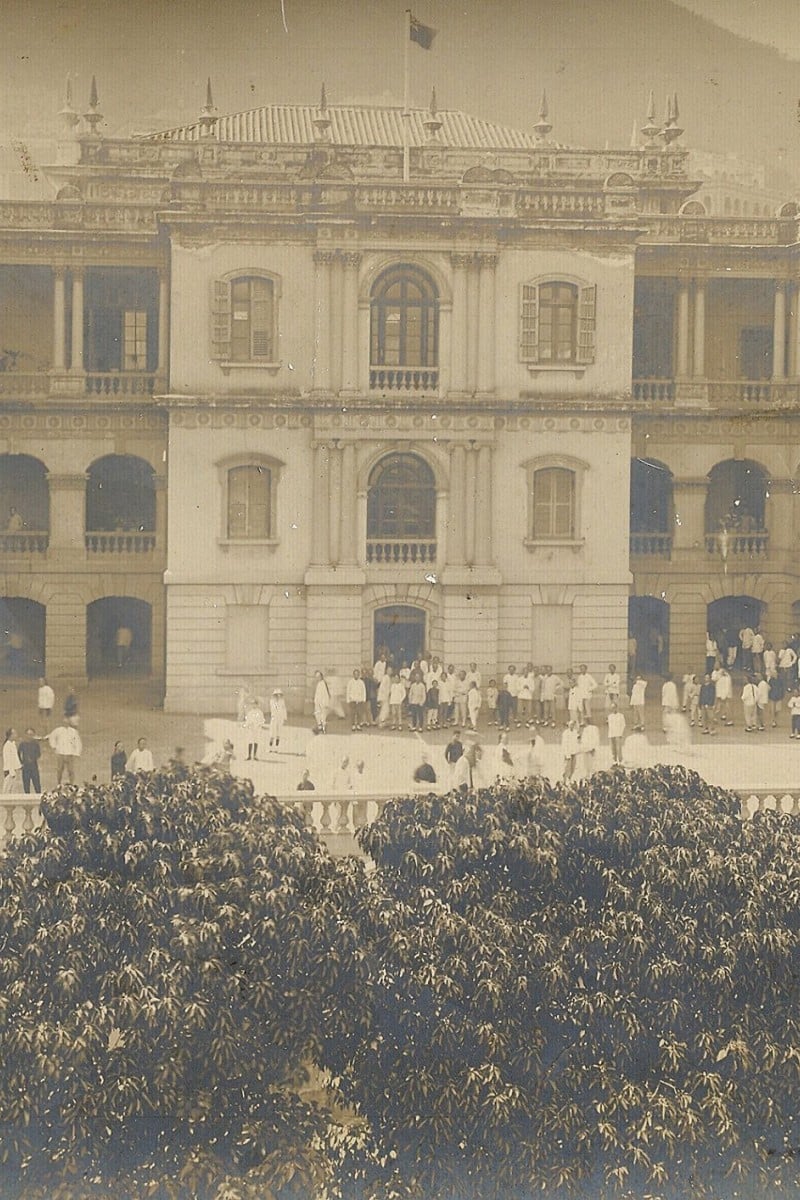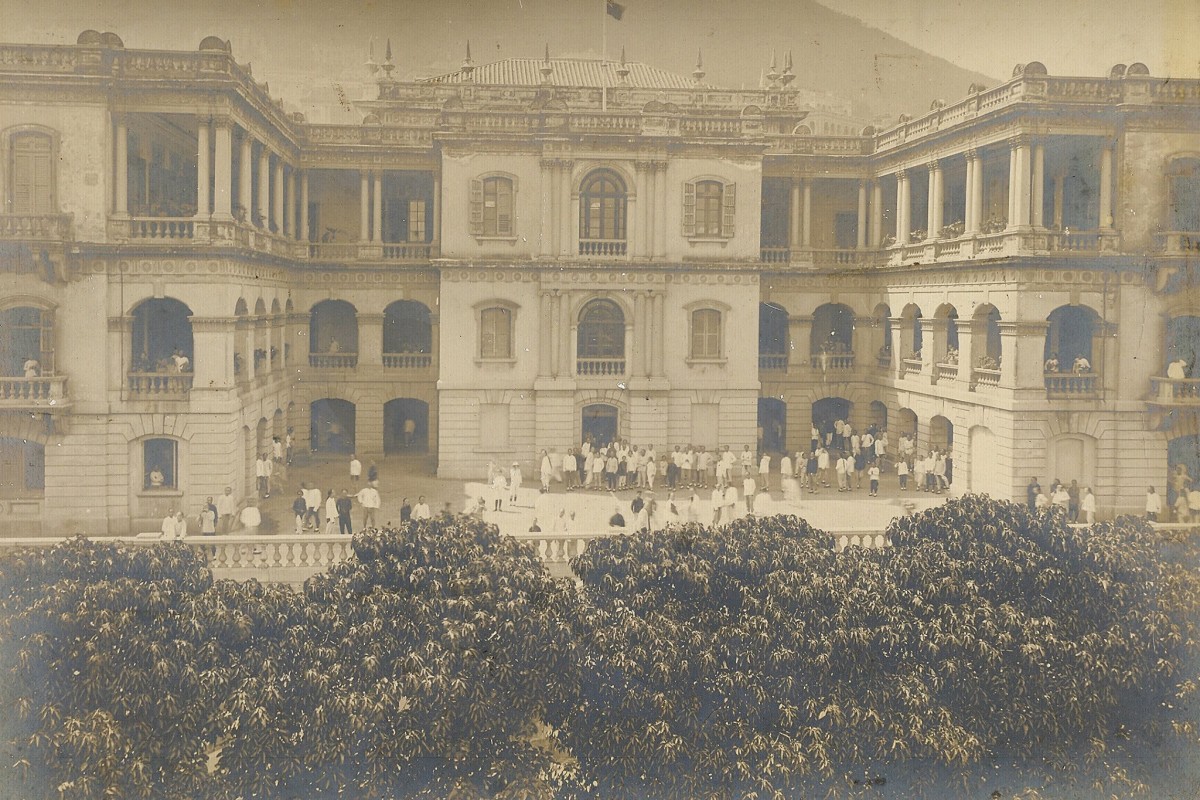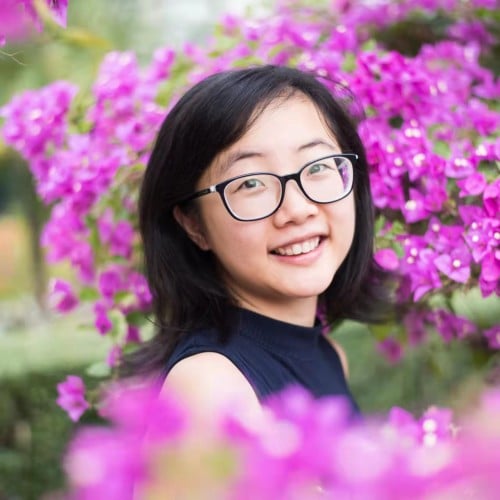
Queen’s College’s VR recreation of original campus at PMQ brings a piece of pre-WW2 colonial Hong Kong back to life
The virtual reality experience will let you take a step into the past
 Queen's College's campus in 1903 as recreated from old photos.
Queen's College's campus in 1903 as recreated from old photos.Before Central’s PMQ became a creative hub, it housed Hong Kong’s married police officers. But did you know that before that, a school once stood in its place? Between 1889 and 1941, Queen’s College called the spot on Aberdeen Street home. Now, thanks to modern technology, you can revisit the old building.
As part of the school’s open day last week, Queen’s College’s History Museum invited the public to take part in a virtual reality (VR) experience that allows you to see what the original school looked like. Just put on a pair of goggles, and you are taken back in time to an empty school hall waiting to be explored.
The scary truth and fascinating military history behind HK’s buried wartime bombs
Queen’s College, which was originally named Central School, was one of the most prestigious schools in colonial Hong Kong. During the VR experience, you’ll see paintings of Britain’s Queen Victoria, King George V and Edward VII. There is also a wall of honour with the names of the school’s top students from 1875 to the 1940s.
“We went through old school publications to look for each year’s academic records,” explains John Kwok Ho-yeung, the museum’s honorary assistant curator and a former Queen’s College student.
“We’re lucky that most of the school publications were kept till this day ... some of the records went missing after the war, [but] we’ve collected a lot of them back from alumni and teachers.”
In the principal’s office, you can see a fireplace and an old-fashioned writing desk. All the trophies in the room have been carefully copied from an old photo. Meanwhile, the classrooms are mostly bare: two long benches of seats for students, a desk and chair for the teacher, a blackboard, and nothing else.
The old Queen’s College campus didn’t have a happy ending. It was closed after the second world war started, and local refugees took anything they could find that was made of wood, from floors to staircases. The building was then destroyed completely during the Japanese occupation of Hong Kong.
To recreate the original exterior of another campus that stood near Gough Street between 1862 to 1894, the museum went through many years of the government gazettes and old maps.
Using photographs provided by the Moonchu Foundation, and an architectural atlas found at the National Archives in Britain, they were able to “rebuild” it. The museum plans to keep upgrading the VR school tour to feature more rooms and show how the campus changed over time.
“We’re thinking of ‘rebuilding’ an old toilet; night soil [human waste collected at night from buckets] was common at the time and only the teachers had flushing toilets,” says Kwok. The only difficulty is finding materials to base them on – you don’t often find old photos of toilets.
Building the VR experience took the team several months and involved going through mountains of material, including old class photos, government archives, and school publications. The team also heard the accounts of two former students who, now in their 90s, went to Queen’s College before the war.
“I feel like I’ve been studying in this school since 1862,” jokes Kwok.
The painstaking work, however, has been worth it. “Reading history from books can be dull, but putting the VR goggles on and going to the environment where the old alumni used to study makes it far more interesting,” he says.
Queen’s College’s Form Four students Xiang Yifan and Luk Wang-lok agree. Both science students, they have grown to enjoy history a lot more after helping out at the museum’s archives.
“World history is mostly about big events, but school history is different,” says Yifan. “Knowing what the alumni went through makes it more relatable to us,” adds Wang-lok.
They also learned some interesting titbits about the school along the way. In the 1970s, says Yifan, more than 30 textbooks were stolen from the school. “How did they even leave campus with that many textbooks without anyone noticing?”
Wang-lok, meanwhile, was surprised to learn that the school got its first computers way back in the 1970s and 80s. It seems only fitting that the school continues to bring history and technology together.
“I think VR is a good way to promote our school’s history,” says Kwok. “The new technology is an opportunity to get students interested and invested in history.”
Edited by Charlotte Ames-Ettridge
